UC Gardening Blogs
Mexican Marigold
At last Saturday's plant sale at the UC Davis Arboretum, I bought a Tagetes lucida. You might know it by one of its numerous other names: Mexican mint marigold, sweet-scented marigold, Santa Maria, Yerba Anise, African Marigold, Sweet Mace, Pericon, winter tarragon, Spanish tarragon, and Mexican tarragon. Technically, this plant is not a true tarragon. French tarragon (or German tarragon if you live in Germany) is Artemisia dracunculus. Its flowers are tiny and green, and the leaves are used a lot in French cooking. Their flavor is described as herbal or fresh. You may remember adding it while making béarnaise - it is a key ingredient in the sauce.
Mexican tarragon is thought to taste like French tarragon, but with a bit of anise or licorice flavor as well. Mexican tarragon's leaves are similar to the French variety, but the flowers look like those of single marigolds – 5-petaled and bright yellow, hence the name “lucida” meaning light or bright.
Mexican tarragon's use has been traced back to the Aztec culture in Guatemala. It was used to add peppery warmth to a cocoa beverage called chocolatl, as a good luck charm for safe passage across waterways, and to ward off demons while harvesting maize. The whole plant was also used to treat gastrointestinal problems and colds.
Today's cook can add the fresh or dried flower petals and/or the fresh young leaves to corn, tomatoes, squash, avocados, summer fruits, eggs, fish and chicken. In some cultures, it is an added flavoring for alcoholic beverages, cakes, and custards. A little bit, finely chopped, goes a long way.
One of its best features of Tagetes lucida is that it attracts bees, butterflies, and birds and also repels some of the not-so-wanted insects in the garden. It is a perennial in USDA zones 9 through 11 attaining a height of about 2 ½ to 3 feet. It likes full sun but will take partial shade. A freeze will cause it to die back, but it should return in the spring. It requires good drainage and is drought-tolerant, but it does better with some water, just not on the leaves. Wherever the stems touch the ground, it can sprout a new plant. It can also reseed.
I will be planting it near my pineapple sage in a bed with mostly herbs. Wish it and me luck!
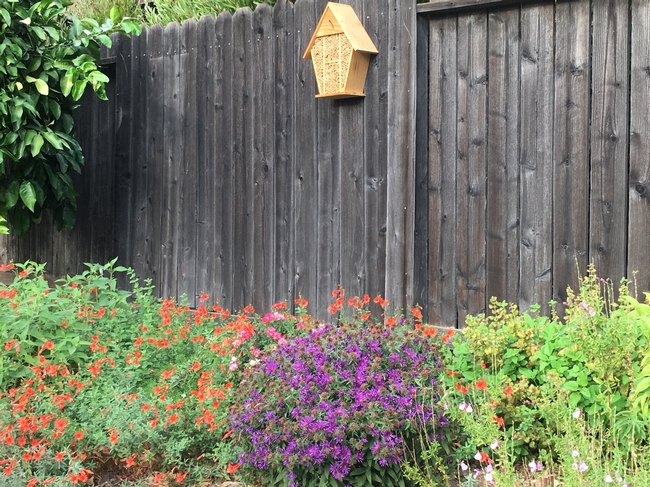
photos by Michelle Davis
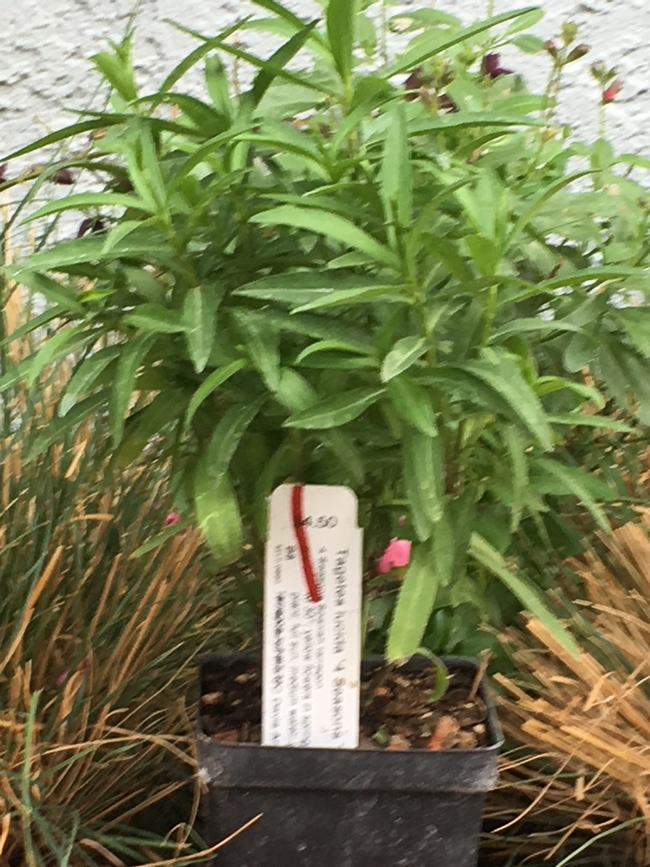
IMG 0687
Targeting the Tsetse Fly
He targets the tsetse fly. Tsetse flies, large biting flies that inhabit much of Africa, feed on...

Medical entomologist Geoffrey Attardo in his office. (Photo by Kathy Keatley Garvey)
Phalsa Berry
You've probably had a similar experience. You see an interesting plant in a mail-order catalog or nursery website you suddenly desire for your garden. You order it. But when it arrives you're disappointed that instead of receiving a lush mature plant, you receive something that looks like a twig with two small wilting leaves on it. That's the story of my Phalsa Berry plant (Grewia asiatica), also known as a Falsa berry and Sherbert berry that I received in the mail this spring.
If you're unfamiliar with the Phalsa plant, it's a subtropical deciduous shrub or small tree in the Tiliaceae family. Mature plants grow from 6 to 15 feet tall. It has long skinny droopy branches when mature. It bears small clusters of yellow blossoms in the spring.
The plant is self-fertile, grows in most well-drained soils in full sun. It's a fast-growing plant, with most plants producing berries in their second year. It does require annual pruning since berries are borne on the current year's growth. Native to India and Southeast Asia, it is hardy in USDA zones 9 – 11.
The phalsa berries are small, measuring about one to two centimeters in size. Purple in color when ripe, they usually contain only a single seed. The berries a high in vitamin C, but are acidic and slightly astringent. Ripe berries have a very short shelf life of only a few days. The fresh berries are frequently juiced and made into a refreshing beverage with sugar added to sweeten the taste. Commercially, the berries have also been used in soft drinks in Asia.
In India folklore, the plant's leaves and bark have been used to treat a variety of conditions ranging from cancer to urinary problems.
Since I've never tasted a fresh phalsa berry, I'll have to wait another year until my plant bears a crop of berries for me to try one. Who knows, I may end up not liking its taste, just like I realized I didn't like the taste of fresh goji berries when my plant finally gave me a crop. But that a different story.
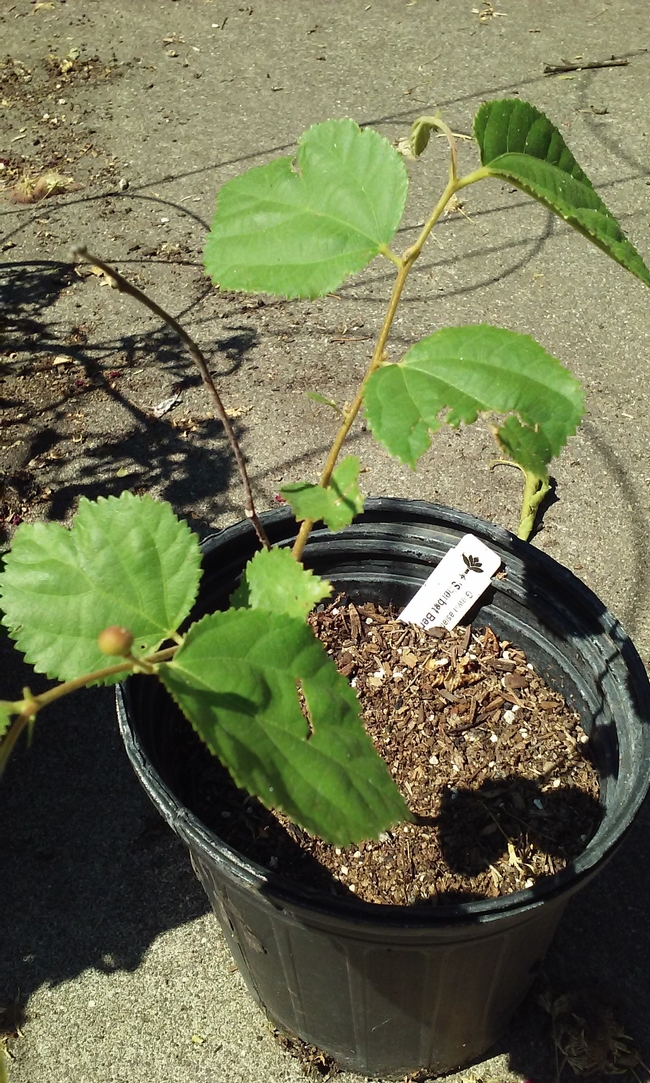
photo by Kathy Low
Steer clear of tarantula hawks
I was sitting on my deck here in Saratoga recently and noticed a beautiful, albeit very large, bug...
Watching It Like a Hawk
Watching it like a hawk... A variegated meadowhawk dragonfly, Sympetrum corruptum, that...
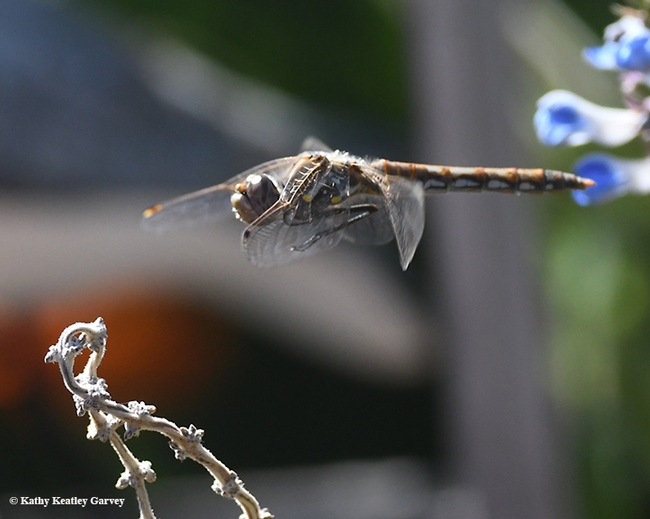
A variegated meadowhawk dragonfly, Sympetrum corruptum,in flight. (Photo by Kathy Keatley Garvey)
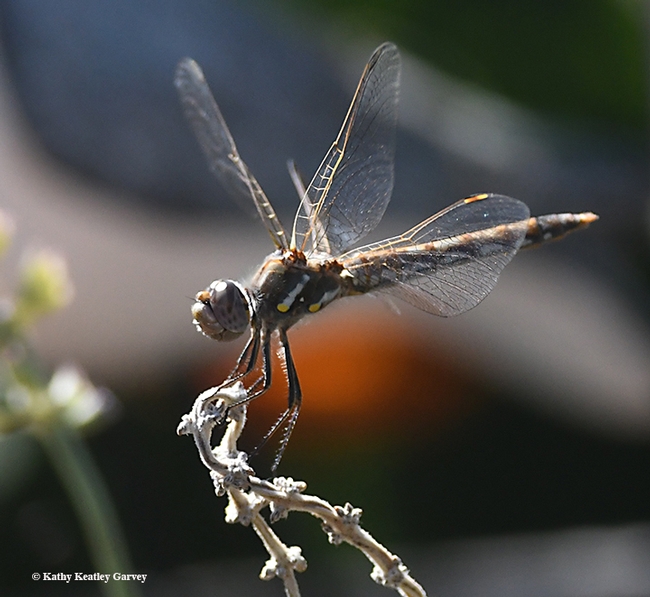
Touchdown! The variegated meadow hawk perches on a spent salvia. (Photo by Kathy Keatley Garvey)
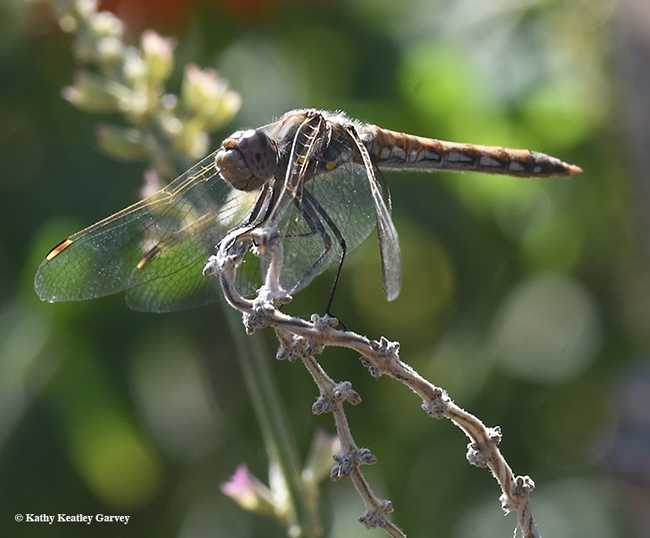
This variegated meadowhawk dragonfly, a strong wind drooping its wings, nevetheless kept returning to this perch, a spent salvia. (Photo by Kathy Keatley Garvey)
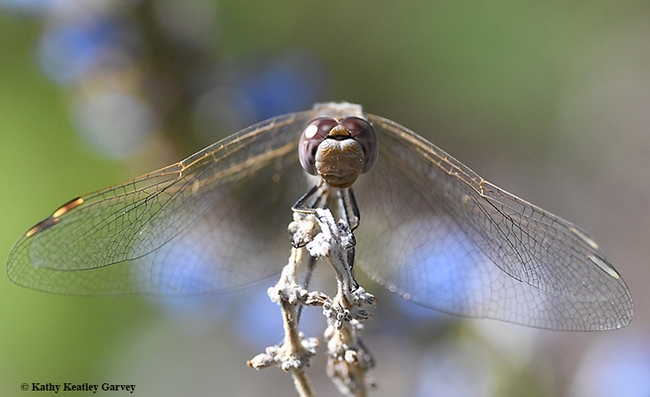
Eye to eye with a variegated meadowhawk dragonfly, Sympetrum corruptum. (Photo by Kathy Keatley Garvey)



